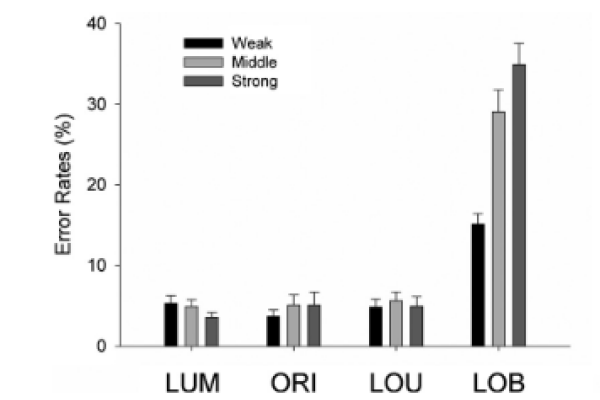2009-12-23

The way our brain selects relevant information and discards irrelevant one is a highly competitive process. The ability to notice relevant visual information has been assumed to be determined both by the relative salience of relevant information compared with distracters within a given display and by voluntary allocation of attention toward intended goals. A dominance of either of these two mechanisms in stimulus processing has been claimed by different theories. A central question in this context is to what degree and how task irrelevant signals can influence processing of target information. This question was examined in this study using event-related potentials (ERPs). Using parametrical manipulations of the saliency of distracting stimuli we found that the amount of saliency was predictive for the proportion of detected information when relevant and irrelevant information were spatially separated but not when they overlapped. Weighting and competition of incoming signals was reflected in the amplitude of the N1pc component of the event-related potential. Initial orientation of attention toward the irrelevant element had to be followed by a reallocation process, reflected in an N2pc. The control of conflicting information additionally evoked a fronto-central N2 that varied with the amount of competition induced. Thus the data support models that assume that attention is a dynamic interplay of bottom-up and top-down processes that may be mediated via a common dynamic neural network.
Wascher, E., & Beste, C., Tuning perceptual competition, J Neurophysiol, 2010, 103: 1057-1065.

The way our brain selects relevant information and discards irrelevant one is a highly competitive process. The ability to notice relevant visual information has been assumed to be determined both by the relative salience of relevant information compared with distracters within a given display and by voluntary allocation of attention toward intended goals. A dominance of either of these two mechanisms in stimulus processing has been claimed by different theories. A central question in this context is to what degree and how task irrelevant signals can influence processing of target information. This question was examined in this study using event-related potentials (ERPs). Using parametrical manipulations of the saliency of distracting stimuli we found that the amount of saliency was predictive for the proportion of detected information when relevant and irrelevant information were spatially separated but not when they overlapped. Weighting and competition of incoming signals was reflected in the amplitude of the N1pc component of the event-related potential. Initial orientation of attention toward the irrelevant element had to be followed by a reallocation process, reflected in an N2pc. The control of conflicting information additionally evoked a fronto-central N2 that varied with the amount of competition induced. Thus the data support models that assume that attention is a dynamic interplay of bottom-up and top-down processes that may be mediated via a common dynamic neural network.
Wascher, E., & Beste, C., Tuning perceptual competition, J Neurophysiol, 2010, 103: 1057-1065.